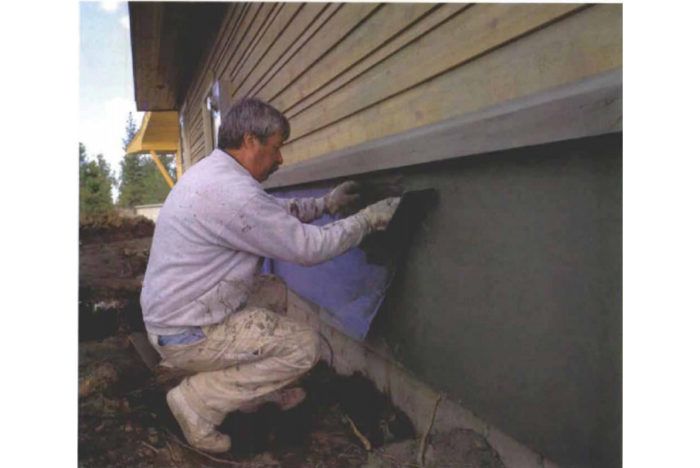Synthetic Stucco
Exterior insulation and finish systems provide an attractive, energy-efficient, low-maintenance siding; but should you trust them on your house given their recent failures?

Synopsis: This is a look at the controversial track record of EIFS — an exterior insulation and finish system that relies on synthetic stucco. Although the approach holds promise, detailing mistakes led to widely reported moisture problems, souring homeowners and builders alike. This article explains where the trouble starts and how to avoid it.
What began a few years ago as a frenzy of business for installers of synthetic stucco in North Carolina has spawned a new trade: synthetic-stucco removal.
Synthetic stucco, or EIFS (exterior insulation and finish systems; the acronym is pronounced eefs), is being ripped from houses in almost every neighborhood in Wilmington, North Carolina. In its place: clapboards, shingles, hardboard siding, real stucco or brick. Rarely is EIFS going back up. The siding is being replaced because water got behind the synthetic stucco and damaged the sheathing. In some cases, even the framing suffered damage.
I found this panicky removal of EIFS at odds with much of what I knew about the material. I began researching an article on synthetic stucco a couple of years ago with the goal of writing about the material, how it’s applied and detailed, and how it’s maintained. Since then, the problems in North Carolina surfaced, and the story was no longer quite so cut and dried. From what I’ve since learned about EIFS, I’m not so sure I’d want it on my house — at least not the way it’s been detailed in the past.
As a modern building material, synthetic stucco has a relatively long history. It was first used in post-World War II Germany to resurface buildings with damaged masonry. It came to this country in the late 1960s, and its use became widespread. In 1995, installers applied more than 260 million sq. ft. of the material in the United States, about 80% of that on residences. If applied properly, EIFS can be an attractive, low-maintenance siding. If not, it can be a disaster.
What began as a sticky issue local to North Carolina has blossomed into a small but thorny national one. On one side are EIFS manufacturers and the EIFS Industry Members Association; on the other side are builders and contractors burned by their association with EIFS. In the middle are property owners. Of course, lawyers are present in the EIFS controversy, too, feeling their way through an evolving legal crisis that has spawned many individual lawsuits and a half-dozen class-action suits representing numbers of homeowners.
Why does water cause so much damage when it gets behind EIFS?
Traditionally, residential EIFS refers to a surface-sealed, water-barrier siding system made up of a layer of foam-insulation board, fiberglass mesh and one or two base coats and a finish coat of synthetic stucco.
Commercial EIFS is generally thicker than residential EIFS and usually is applied over steel framing. For residential applications, the insulation board usually is glued onto the substrate, which can be plywood, gypsum, oriented strand board (OSB), cement board or masonry. Next comes a layer of fiberglass mesh, which is bedded over the insulation with an acrylic portland-cement base coat. A second base coat sometimes is applied before the finish coat goes on. Standard EIFS also relies heavily on proper detailing, especially caulking and flashing.
For more photos, drawings, and details, click the View PDF button below:
Fine Homebuilding Recommended Products
Fine Homebuilding receives a commission for items purchased through links on this site, including Amazon Associates and other affiliate advertising programs.

Smart String Line

Nitrile Work Gloves

Staple Gun


























